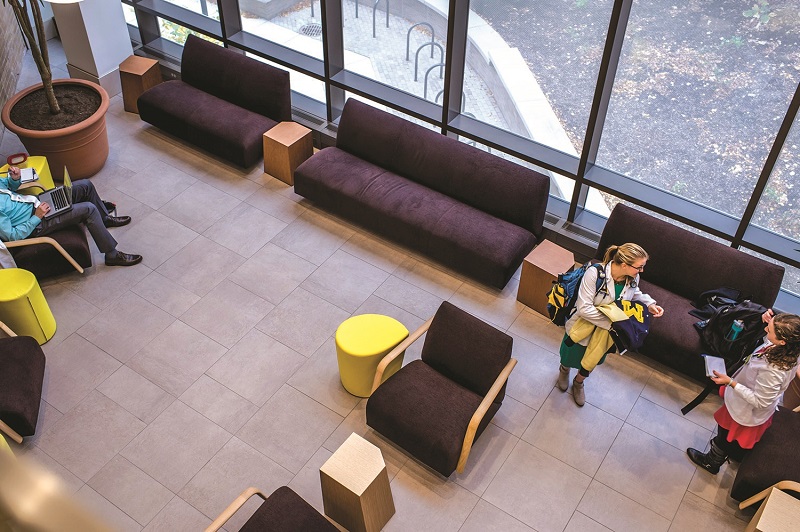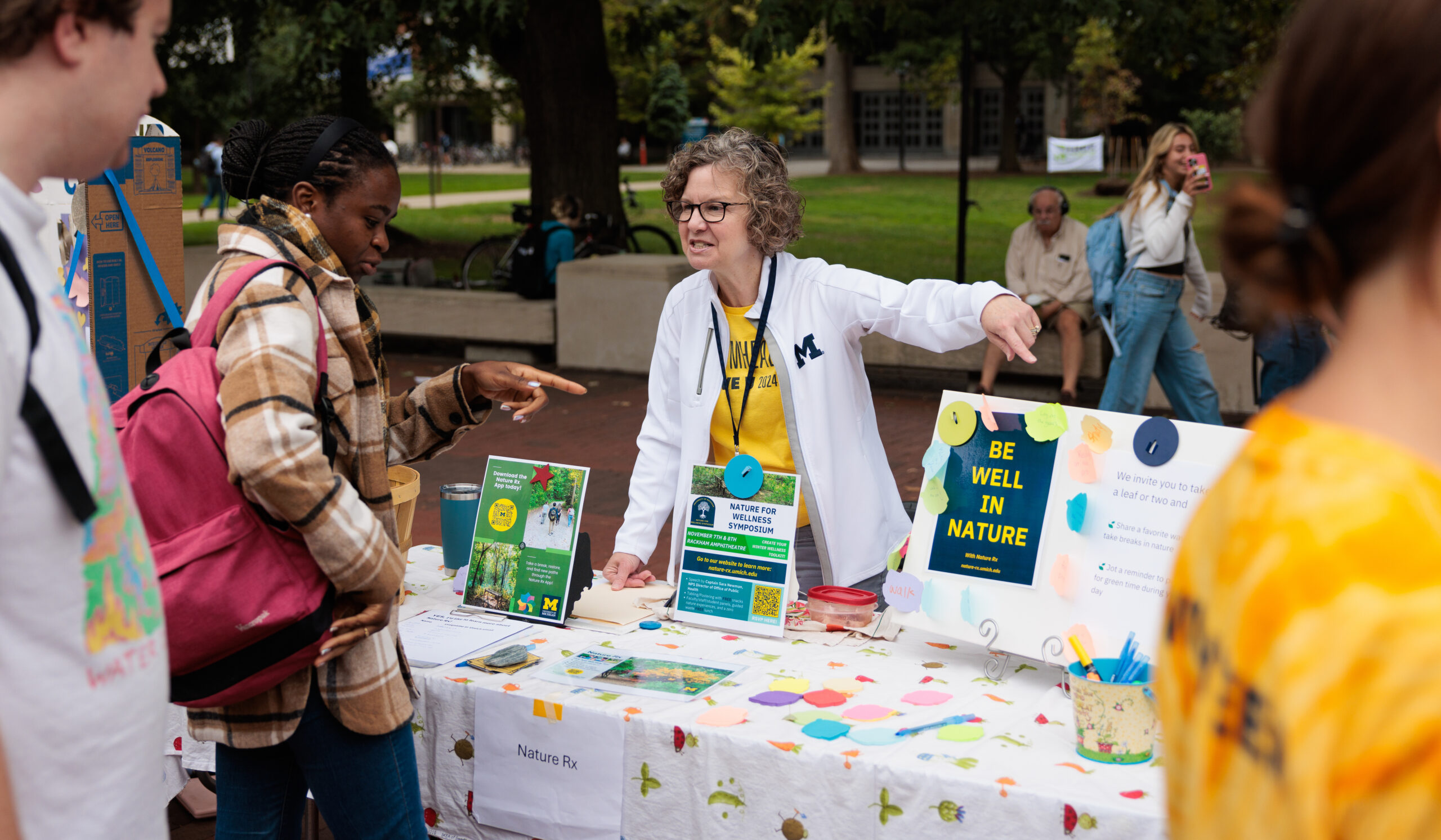U-M’s libraries are not just flourishing, they’re futuristic — embracing the latest technologies and trends in design while empowering discovery. The newly renovated Taubman Health Services Library, which boasts a virtual cadaver, is just the latest example on campus.
At first glance, the newly renovated Taubman Health Sciences Library could easily be mistaken for a lounge. Visitors are surrounded by a wall of windows, sleek tiled walkways, potted plants, bright yellow walls, and flat screen televisions. Even the furnishings look worthy of a boutique hotel — plush brown couches accented by funky side tables and dramatic high-backed chairs. Missing are endless shelves of books, card catalogs, and shushing librarians in what is now a nearly all-digital collection.
Welcome to the University’s newest state-of-the-art library, which reopened in July following a $55 million renovation. Located on the upper floors of the 143,000-square-foot facility are everything from clinical practice rooms, where medical students can treat actors portraying patients, to classrooms where the walls and tables are white boards. But it is on the ground floor that one finds the library’s ultimate curiosity, a virtual cadaver.
“We are going to have a contest to name him,” says Jane Blumenthal, director of the library. She slices the $75,000, life-size computerized man in half with a swipe of her finger, revealing a colorful bisection of his torso.
The revamped 35-year-old Taubman library is just the latest example of how the University has stayed on the cutting edge of exploration and engaged learning for decades. From the 1981 unveiling of the underground Law Library, to the renovation of the Shapiro Undergraduate Library in 1995 and the opening of the Duderstadt Center in 1996, U-M has invested in the latest technologies and design features. But the goal has always remained the same: to provide the best infrastructure of scholarship possible for U-M students, faculty, and staff as well as the general public.
“It’s funny because people often say to me that libraries are so 20th century,” says James Hilton, dean of libraries at U-M. Hilton, who appropriately has his office in the largest one on campus, the Hatcher Graduate Library, which houses a quarter of the University’s 8 million-volume collection on campus. “A library’s mission is to enable and empower discoveries, chronicle them, and then preserve those discoveries for future generations. That will never change.”
Whether those discoveries take place in the quietest campus reading room at Hatcher, or the bustling Design Lab at the Duderstadt Center makes no difference to Hilton. What is important to him is the popularity of the library spaces.
Last year, U-M libraries tallied up more than 4.5 million visitors and the student government requested 100 more seats be added to the undergraduate library during exams.
Scott Dennis, who manages the general reference collection at Hatcher, has a theory that his boss supports. “I think the library provides a sort of neutral space where everyone feels welcome and equally justified in being there, like Switzerland,” he says, adding that students from all different disciplines are now collaborating.
For that reason, the new Taubman library has lots of spaces with mobile furniture. Or as Blumenthal acknowledges, “You have to understand that we did not change the space so the students would use it differently. We noticed how the students were using the space differently and changed it to be compatible to them.”
Read the full story in the late fall issue of Michigan Alumnus magazine.





